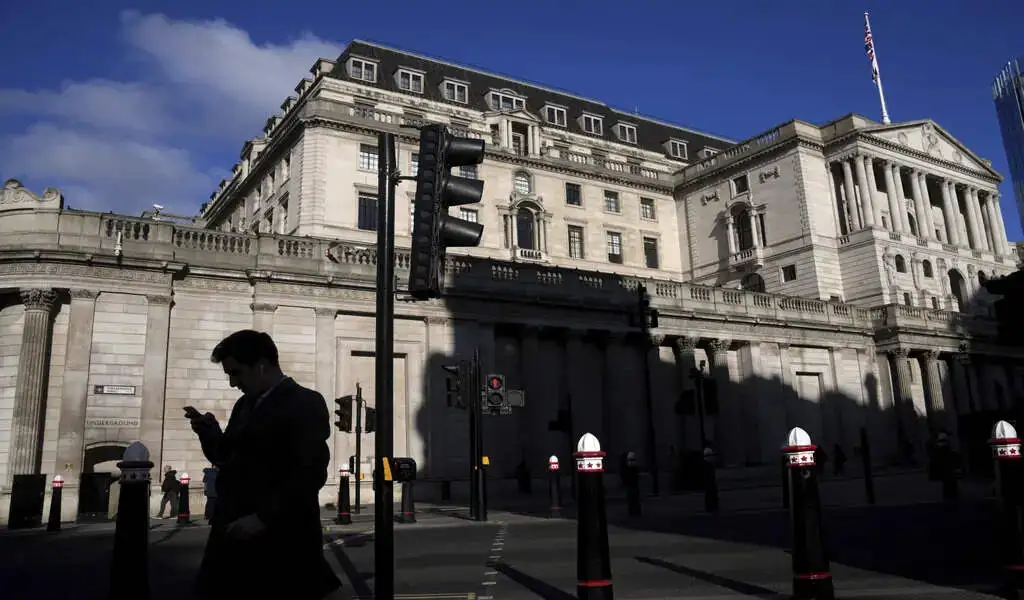Business
Bank of England Cuts Main Interest Rate to 4.50%, Halves Growth Projection.

(VOR News) – On Thursday, the Bank of England decreased its primary interest rate for the third time in the past six months. Consequently, the Bank of England reduced its projection for the British economy’s expansion by 50%.
The nine-member Monetary Policy Committee of the bank has reduced the primary interest rate by 25 basis points to 4.50%. As of mid-2023, this is the lowest level.
The decision was avidly anticipated by the financial markets. The magnitude of the decline in the Bank of England’s economic growth projections was unexpected from the outset. Three months ago, the bank anticipated that the UK economy would expand by 1.5 percent this year;
However, the Bank of England now predicts moderate 0.75 percent growth.
The recently elected Labour government in the United Kingdom would be exceedingly disheartened if this were even partially accurate.
This government has prioritized economic growth as a means of enhancing living conditions and providing financial support to public agencies that are experiencing financial difficulties. The party’s popularity has declined since its election victory in July, as a result of the enigmatic nature of progress.
Treasury Secretary Rachel Reeves expressed her approval of the interest rate reduction, but she also expressed her dissatisfaction with the growth rate and stated that the government will act more quickly to stimulate economic growth. When she presented her inaugural budget in October of the preceding year, Reeves faced criticism for increasing corporation taxes.
In the forthcoming months, the administration will undoubtedly anticipate that the central bank will provide assistance by substantially reducing interest rates.
This will result in a decrease in returns for depositors, in addition to the reduction of mortgage rates and the enhancement of loan affordability.
Given the Bank of England prediction that inflation will exceed expectations in the coming months, reaching a maximum of 3.7% in the first half of the year before reverting to the target rate of 2%, the financial markets remain uncertain about the number of additional cuts that are anticipated this year.
According to Bank Governor Andrew Bailey, the British economy’s future remains uncertain and could become even more so if US President Donald Trump implements tariffs as promised.
Inflation and GDP are affected concurrently by the Bank of England.
“We will carefully and gradually monitor the U.K. economy and global developments, and further reduce rates,” Baily informed the general population. “Consistent and moderate inflation is essential for a robust economy, and it is the responsibility of the Bank of England to maintain this.”
The rate decision on Thursday was a significant surprise, as two of the nine panel members proposed a more severe reduction of half a percentage point, which would have brought the rate to 4.25%.
Luke Bartholomew, Bank of England Deputy Chief Economist at abrdn (formerly Aberdeen Asset Management), posits that the two ballots in favor of a larger decrease “indicate the extent of concern among certain policymakers regarding the challenges to growth.”
Instead of focusing on growth, the rate-setting panel is responsible for ensuring that inflation, as measured by the consumer price index, remains within the 2% objective for the upcoming years.
The objective is to sustain inflation at a consistent rate. Nevertheless, inflation may be mitigated by a halt in development, which suggests a decrease in economic demand.
The majority of analysts anticipate that inflation will then decrease toward the target, enabling the panel to implement a reduction on Thursday, despite the fact that it is currently at 2.5% and there are predictions of an increase in the coming months, partially due to the upcoming corporation tax hikes under the next Labour administration.
The inflation rate is substantially lower than it was several years ago. This is primarily due to the fact that central banks raised borrowing costs from nearly nothing during the Coronavirus pandemic.
Subsequently, prices escalated, initially due to supply chain complications and subsequently as a consequence of Russia’s comprehensive invasion of Ukraine, which resulted in an increase in energy prices.
Although few economists anticipate a return to the exceptionally low interest rates that were in place following the 2008–2009 global financial crisis and throughout the pandemic, central banks, particularly the US Federal Reserve, have begun to reduce rates as inflation has decreased from multidecade highs.
SOURCE: AP
SEE ALSO:
Trump Executive Order Keeps Men Out of Women’s Sports
White House Announces Cancellation of $8 Million in Politico Subscriptions